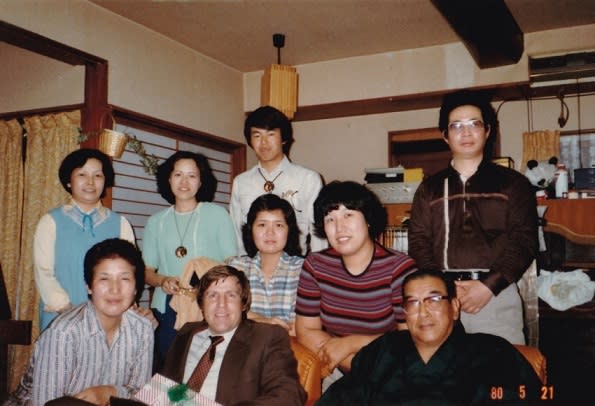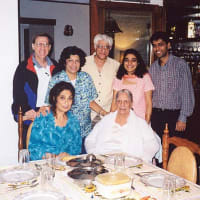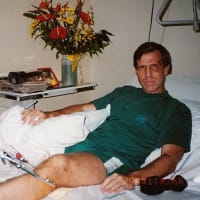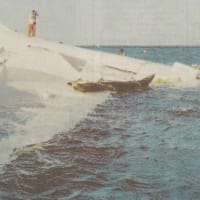ここから第六章です。代表的な日本企業いすゞ自動車の社員としての生活が始まります。さて、入社までの経緯は?
Chapter #6: BECOMING AN EMPLOYEE OF A LARGE JAPANESE CORPORATION
One of the English students I had was my next-door neighbor’s daughter. The father was to top executive in Isuzu Motors Limited. That was one of the major truck manufacturers in the country. It was one of the three oldest automotive companies in the country along with Toyota and Nissan. During and after World War II, Isuzu decided to devote most of its strength in building and marketing trucks instead of passenger cars, which Toyota and Nissan did. All three produced both cars and trucks, but Isuzu put most of its effort into trucks. The truck industry is very cyclical and is affected by economic shifts, and Isuzu suffered greatly during periods of recession. In order to survive, it had to sell off one of its plants (later to become Hino Motors) and affiliated several times with other manufacturers through product cross badging. Nothing seemed to work until in 1971 General Motors (GM) bought 34% of the company.

The family to got me into Isuzu Motors
With the very different corporate cultures and approaches to business between GM and Isuzu, there were always areas of friction and pro-GM/anti-GM camps within Isuzu Motors. The pro-GM camp was basically saying that Isuzu could not survive without GM, and to prosper, Isuzu needed all the help it could get from GM including management support. The anti-GM camp was saying that Isuzu and GM are equal partners with different strengths and GM need not participate within Isuzu’s management at all. Interestingly, I didn’t know it at the time, but the person that brought me into the company was more in the anti-GM camp. His feeling is that he could build Isuzu into an international organization without GM’s help. Anyway, he was my gateway into the company.
最初の仕事は人事の研修部。
My first position was to work in the training section within the Personnel Department. My first function was to set up a range of English classes for the entire company, as well as test staff on their English ability.
一方で、結婚に向けて準備。
While I was adjusting to working in a large Japanese company, I was also adjusting to married life. I had been with Taeko most of my time through graduate school. She’s a Tokyo girl, born and raised right in the center of the city.
The first time she brought me over to her house, I met the whole family, father, mother, two brothers and sister. Taeko is the youngest of the four children.
Taeko’s father ran a carpenter business but was pretty much retired when I met him. The two sons ran the business with the older of the two managing the company, the mother doing the accounting and the other brother doing a lot of the carpentry work.
Uploaded by Nobi Saito
以上は1980年の話です。日本の自動車の生産台数が世界一になり、モスクワオリンピックをボイコットし、竹の子族が出現し、ルービックキューブとチョロQが流行った年です。
この頃、読者の皆様はどうされていましたか。まだ、生まれていない!?
私は1977年に日本IBMに入り、入社時から狙っていた海外出張(初めての海外)で1979年12月から1980年5月までサンノゼで過ごしました。Ronさんは、サンノゼ州立大学を卒業して日本に、私はサンノゼのIBMに長期出張となりました。Ronさんと知り合ったのは30年後ですが、縁を感じます。
そして、今も、海外と関わる仕事を行い、それなりの生活を続けていられることに感謝し、自分の人生の選択が間違っていなかったことを実感しています。
Chapter #6: BECOMING AN EMPLOYEE OF A LARGE JAPANESE CORPORATION
One of the English students I had was my next-door neighbor’s daughter. The father was to top executive in Isuzu Motors Limited. That was one of the major truck manufacturers in the country. It was one of the three oldest automotive companies in the country along with Toyota and Nissan. During and after World War II, Isuzu decided to devote most of its strength in building and marketing trucks instead of passenger cars, which Toyota and Nissan did. All three produced both cars and trucks, but Isuzu put most of its effort into trucks. The truck industry is very cyclical and is affected by economic shifts, and Isuzu suffered greatly during periods of recession. In order to survive, it had to sell off one of its plants (later to become Hino Motors) and affiliated several times with other manufacturers through product cross badging. Nothing seemed to work until in 1971 General Motors (GM) bought 34% of the company.

The family to got me into Isuzu Motors
With the very different corporate cultures and approaches to business between GM and Isuzu, there were always areas of friction and pro-GM/anti-GM camps within Isuzu Motors. The pro-GM camp was basically saying that Isuzu could not survive without GM, and to prosper, Isuzu needed all the help it could get from GM including management support. The anti-GM camp was saying that Isuzu and GM are equal partners with different strengths and GM need not participate within Isuzu’s management at all. Interestingly, I didn’t know it at the time, but the person that brought me into the company was more in the anti-GM camp. His feeling is that he could build Isuzu into an international organization without GM’s help. Anyway, he was my gateway into the company.
最初の仕事は人事の研修部。
My first position was to work in the training section within the Personnel Department. My first function was to set up a range of English classes for the entire company, as well as test staff on their English ability.
一方で、結婚に向けて準備。
While I was adjusting to working in a large Japanese company, I was also adjusting to married life. I had been with Taeko most of my time through graduate school. She’s a Tokyo girl, born and raised right in the center of the city.
The first time she brought me over to her house, I met the whole family, father, mother, two brothers and sister. Taeko is the youngest of the four children.
Taeko’s father ran a carpenter business but was pretty much retired when I met him. The two sons ran the business with the older of the two managing the company, the mother doing the accounting and the other brother doing a lot of the carpentry work.
Uploaded by Nobi Saito
以上は1980年の話です。日本の自動車の生産台数が世界一になり、モスクワオリンピックをボイコットし、竹の子族が出現し、ルービックキューブとチョロQが流行った年です。
この頃、読者の皆様はどうされていましたか。まだ、生まれていない!?
私は1977年に日本IBMに入り、入社時から狙っていた海外出張(初めての海外)で1979年12月から1980年5月までサンノゼで過ごしました。Ronさんは、サンノゼ州立大学を卒業して日本に、私はサンノゼのIBMに長期出張となりました。Ronさんと知り合ったのは30年後ですが、縁を感じます。
そして、今も、海外と関わる仕事を行い、それなりの生活を続けていられることに感謝し、自分の人生の選択が間違っていなかったことを実感しています。



























